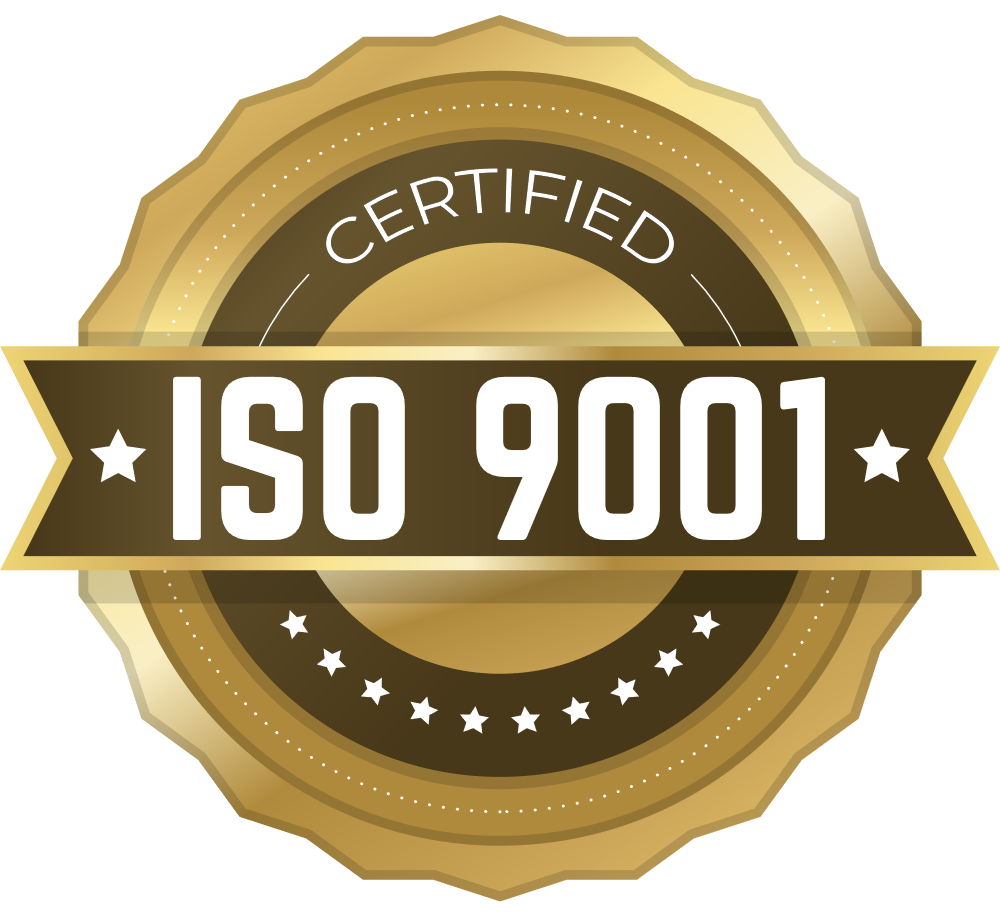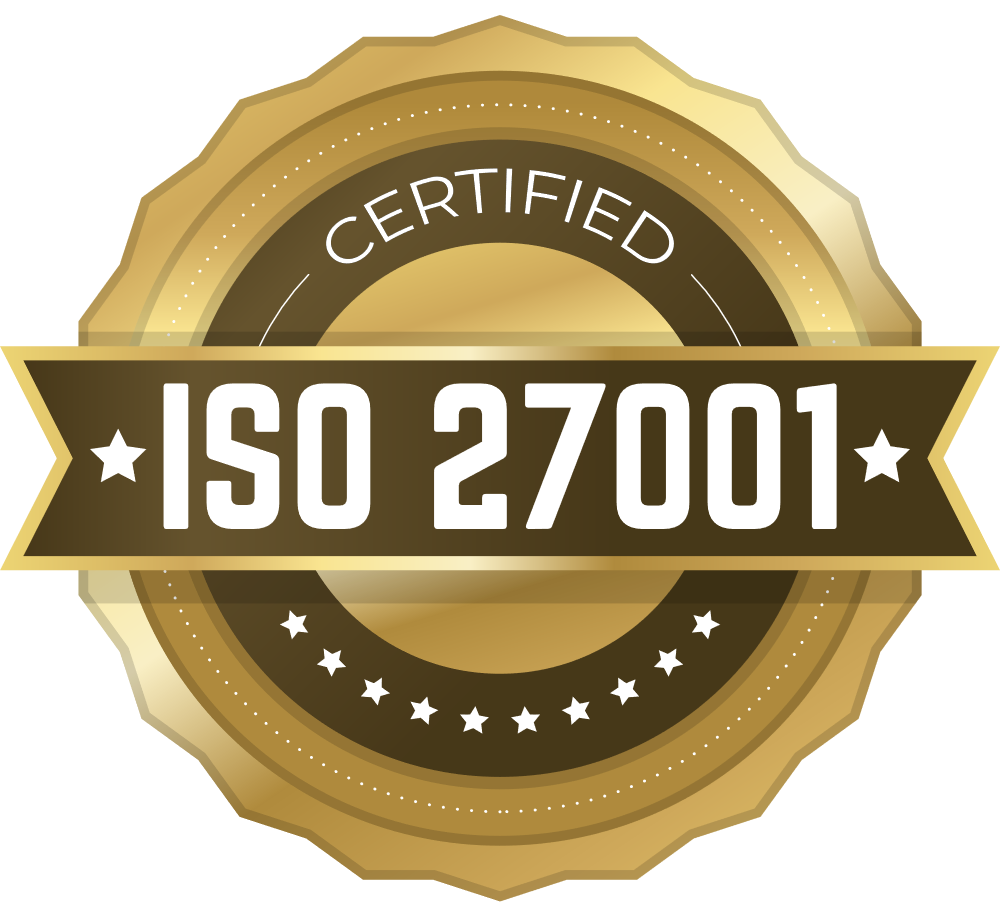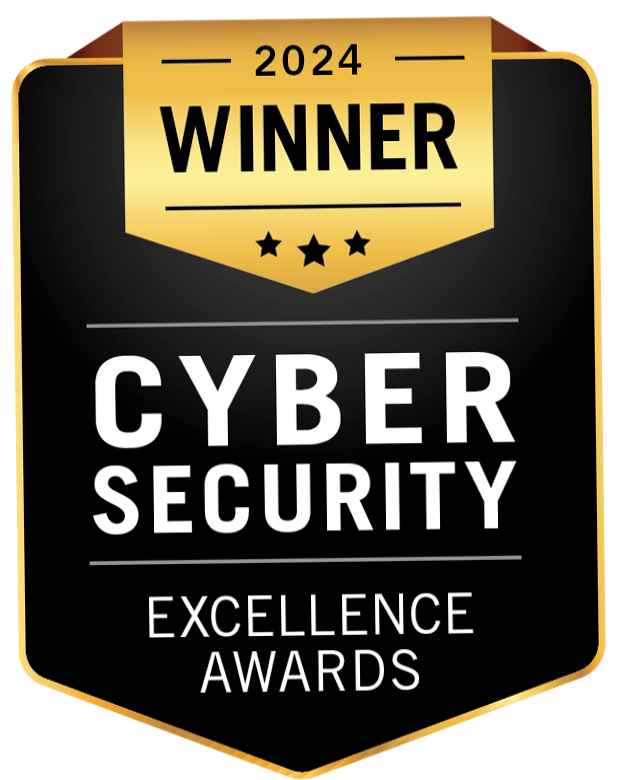Global IT Services Enterprise: Multi-Cloud Security at Scale
Key Impacts
About the Customer
A leading global IT services and business solutions provider serving Fortune 500 enterprises across multiple industries including finance, healthcare, telecommunications, and technology. The company operates a complex, distributed multi-cloud infrastructure spanning AWS, Microsoft Azure, and Google Cloud Platform, managing infrastructure and applications for hundreds of enterprise clients.
As a trusted IT services partner, the organization manages mission-critical workloads, sensitive customer data, and highly regulated compliance requirements across 800+ cloud accounts. Maintaining rigorous security posture and compliance is essential to client trust, regulatory adherence, and business continuity.
The Challenge
As the IT services provider scaled their multi-cloud infrastructure to support growing client workloads, their security operations team faced mounting challenges in operationalizing security across 800+ accounts spanning multiple cloud providers. Key pain points included:
Multi-Cloud Posture Management at Scale
Trend Micro Cloud One Conformity detected thousands of posture violations daily across 800+ AWS, Azure, and GCP accounts—IAM policy violations, storage encryption gaps, network misconfigurations, Kubernetes security issues, and compliance drift. Converting these findings into action was manual, slow, and error-prone. Teams reviewed CSPM reports, assessed violations, created remediation tickets, coordinated with infrastructure teams, and tracked resolution—often leaving critical issues unresolved for extended periods.
Distributed Team Coordination Complexity
Unlike traditional enterprises with centralized infrastructure teams, the IT services company had distributed cloud infrastructure teams across different geographies managing specific client workloads and dedicated cloud accounts. Centralizing all security remediation through a small corporate security team created severe coordination delays. Infrastructure teams responsible for specific client environments couldn't make quick security decisions—everything required approval from central security, creating bottlenecks.
Client Compliance and Audit Requirements
As an IT services provider, the company supported clients with varying compliance requirements (HIPAA for healthcare clients, PCI-DSS for financial services clients, SOC2 for SaaS clients, etc.). Managing compliance posture across 800+ accounts with multiple regulatory frameworks, while demonstrating audit-readiness to multiple client stakeholders, required exhaustive documentation and manual compliance tracking.
Manual Remediation of Routine Tasks
Many CSPM violations were straightforward to fix—enable encryption on storage, rotate unused keys, add security group rules, enforce pod security policies. Yet each required manual investigation, ticket creation, stakeholder coordination, approval routing, and verification. Routine security work was consuming analyst time that should have been spent on strategic security improvements and client-focused security advisory work.
Multi-Cloud Tool Fragmentation
Managing security across AWS, Azure, and GCP required separate tool integrations, different remediation procedures, and inconsistent approval workflows. Infrastructure and security teams were stitching together disconnected processes across multiple cloud platforms and client environments, creating gaps and compliance inconsistencies.
Business Impact: Slow Infrastructure Deployment
Security reviews and remediation bottlenecks were slowing down client infrastructure deployments. Infrastructure teams waiting for security approvals meant delayed time-to-market for client projects, creating business friction and competitive disadvantage.
The Solution
The customer deployed autobotAI as a unified workflow automation platform, integrated with Trend Micro Cloud One Conformity, to orchestrate intelligent security automation across their entire multi-cloud infrastructure serving hundreds of clients.
Unified Multi-Cloud Integration Layer
autobotAI integrated with the customer's core tools:
Trend Micro Cloud One Conformity — continuous security posture monitoring across 800+ AWS, Azure, GCP accounts AWS, Azure, Google Cloud APIs — cloud infrastructure visibility and remediation across client environments Kubernetes APIs — container workload security across all cloud platforms and client clusters Internal CMDB — cloud resource ownership, client associations, and infrastructure team metadata Slack — notifications, approvals, and team collaboration across distributed teams
30+ Automated Security and Compliance Workflows
Working with the customer's infrastructure, security, and client management teams, autobotAI engineers built 30+ automation workflows covering critical security domains:
IAM Remediation Automation for Multi-Client Environments
autobotAI continuously monitors for IAM policy violations, overly-permissive roles, orphaned service accounts, and unused access keys across all three cloud platforms and all client environments. The platform assesses each violation in context of the client's compliance requirements, determines appropriate remediation, and routes approval requests to infrastructure team owners based on resource and client metadata. Low-risk fixes are auto-remediated with audit logging. High-risk policy changes affecting client workloads require approval from responsible infrastructure teams before execution.
Network Security Automation Across Client Infrastructure
Overly-permissive security groups, network ACLs, and firewall rules are automatically identified and remediated across AWS, Azure, and GCP. The platform applies consistent security policies while respecting cloud-specific requirements, client compliance needs, and routing critical network changes through appropriate approval workflows.
Kubernetes Posture Automation for Container Workloads
Pod security policy violations, missing network policies, RBAC configuration gaps, and workload isolation issues are automatically detected and remediated across Kubernetes clusters deployed on all three cloud platforms and supporting multiple client projects.
Multi-Compliance Framework Automation
Continuous monitoring ensures adherence to multiple compliance frameworks simultaneously—HIPAA for healthcare clients, PCI-DSS for financial services clients, SOC2 for SaaS clients, CIS Benchmarks for all clients. The platform contextualizes each violation against relevant compliance frameworks and automatically routes violations with appropriate context to the responsible teams.
Intelligent, Decentralized Approval Routing for Distributed Teams
The critical innovation: instead of routing all remediation requests through a centralized security team, autobotAI automatically identified the appropriate infrastructure team responsible for each violation based on cloud resource metadata, client association, and team ownership information.
When a violation is detected, autobotAI:
- Enriches the finding with resource ownership metadata, client association, and compliance context from the CMDB
- Automatically identifies the infrastructure team responsible for that client environment or cloud account
- Routes the remediation request directly to the infrastructure team via Slack with client and compliance context
- Infrastructure team reviews and approves (or rejects) the proposed fix in context of their client's needs
- autobotAI auto-remediates once approved, or logs rejection for security team review
- Complete audit trail captures the violation, team, client, compliance context, approval decision, remediation action, and outcome
Generative AI-Powered Context and Summarization for Distributed Teams
autobotAI leveraged generative AI capabilities to automatically summarize complex security findings, remediation recommendations, and compliance implications. When violations were detected across client environments, the platform used language models to:
● Summarize technical findings — Converting raw CSPM data into clear summaries for distributed infrastructure teams
● Generate compliance context — Automatically translating violations into language relevant to the specific client's compliance requirements
● Clarify client impact — Explaining how violations affect the specific client's workload, data, or compliance posture
● Provide remediation context — Creating detailed explanations of risks, business impact, and recommended fixes
● Correlate multi-client patterns — Identifying similar violations across multiple clients and suggesting coordinated remediation approaches
This AI-powered summarization ensured that distributed infrastructure teams could quickly understand violations in their specific client context and make informed approval decisions, without requiring deep security expertise.
Human-in-Loop Approval Framework
Not all violations could be auto-remediated. autobotAI implemented intelligent approval logic distinguishing routine fixes from critical changes:
Low-Risk Fixes — Automatically remediated with audit logging (e.g., enable logging, rotate unused keys)
Medium-Risk Changes — Routed to infrastructure teams via Slack with AI-generated context and proposed fix
High-Risk Infrastructure Changes — Escalated to security team for review and approval
Client-Critical Changes — Requiring infrastructure team and client stakeholder coordination
Compliance-Critical Actions — Required multi-step approvals with full audit trails and compliance documentation
This intelligent routing prevented alert fatigue while maintaining governance for critical decisions and client trust.
Serverless, Self-Hosted Multi-Cloud Architecture
autobotAI was deployed as a containerized, self-hosted application within the customer's infrastructure, ensuring:
Data Residency — All security findings, remediation decisions, and audit trails remained within the customer's secure environment
Client Data Protection — Complete segregation and control over client security data aligned with client contracts and compliance requirements
Compliance — Full control over security data aligned with regulatory requirements (GDPR, HIPAA, PCI-DSS, SOC2)
Scalability — Serverless architecture automatically scaled to handle thousands of CSPM findings across 800+ accounts and multiple client environments
Reliability — Multi-region deployment across AWS, Azure, GCP ensuring high availability for client-facing infrastructure
Implementation Approach
Phased Integration Strategy — autobotAI worked with the customer's infrastructure, security, and client management teams to integrate systems via APIs. The platform augmented existing tools rather than replacing them.
Iterative Workflow Development with Client Context — The team incrementally developed 30+ workflows, starting with high-impact domains (IAM remediation, multi-compliance automation). Each workflow was tested with multiple client scenarios, refined with feedback, and deployed with appropriate approval gates.
Multi-Tenant Compliance Framework — autobotAI was configured to handle multiple client compliance requirements, automatically contextualizing violations and remediation to specific client needs.
Distributed Team Enablement — Infrastructure teams were trained and empowered to make remediation decisions for their client environments, shifting from centralized security review to distributed responsibility.
Scale Optimization — The serverless architecture was designed to handle 800+ accounts, thousands of daily violations across multiple clients, and multi-step approval workflows without performance degradation.
Dramatically Accelerated Client Infrastructure Deployment
Posture violations that previously sat for days now remediate in hours through intelligent orchestration, decentralized team approvals, and automated execution. Infrastructure teams could make quick decisions about their client environments without waiting for centralized security review, accelerating client infrastructure deployment and time-to-market for client projects.
Unified Multi-Cloud Posture Management Across Client Environments
For the first time, the organization achieved centralized visibility and control across AWS, Azure, and GCP while maintaining client context and compliance requirements. Security teams view violations, remediation status, and compliance posture across all 800+ accounts and multiple clients in a single platform—with rich client and compliance context.
Distributed Team Empowerment and Accountability
By routing approvals to responsible infrastructure teams, security responsibility shifted from a centralized model to distributed, collaborative ownership aligned with client assignments. Infrastructure teams became directly accountable for their client environments' security posture, improving security culture and client trust.
Multi-Client Compliance Management
With 30+ workflows enforcing multiple compliance frameworks simultaneously, the organization achieved compliance consistency across diverse client requirements. Each violation was contextualized to the relevant compliance framework, and remediation was automatically verified against compliance requirements.
Eliminated Manual Workflow Overhead and Improved Efficiency
The 30+ automated workflows removed repetitive manual tasks—ticket creation, compliance context gathering, stakeholder coordination, manual remediation, verification, and documentation. Infrastructure and security teams were freed from operational toil to focus on strategic security initiatives and client-focused security advisory work.
Improved Decision-Making Through AI-Powered Contextualization
Generative AI-powered summarization transformed how violations were communicated to distributed infrastructure teams. Complex security findings were automatically translated into clear, client-specific, compliance-relevant language, enabling faster and more informed remediation decisions by teams without deep security expertise.
Automated Multi-Compliance Audit Readiness
With 30+ workflows enforcing multiple compliance policies across client environments, the organization achieved continuous compliance readiness rather than periodic audit cycles. Audit trails were automatically generated with complete compliance context, dramatically reducing audit preparation effort and demonstrating strong compliance posture to clients.
Enhanced Distributed Team Collaboration
Slack-integrated notifications, approvals, and AI-generated remediation summaries improved coordination across geographically distributed infrastructure teams. Teams received clear, contextual information about violations specific to their client environments and could make confident decisions within their existing communication platform.
Complete Operational and Client Visibility
With orchestration through autobotAI and comprehensive audit logging, security leadership gained visibility into remediation timelines, team performance, compliance posture by client, and business impact—enabling data-driven operational decisions and stronger client trust.
Operational Efficiency at Enterprise Scale Supporting Multiple Clients
The organization sustained operational efficiency managing 800+ accounts across multiple clients with lean infrastructure and security teams. Teams could focus on architecture, strategic security initiatives, client advisory work, and emerging threats rather than operational toil.
Technical Architecture Summary
autobotAI is deployed as a serverless orchestration platform within the customer's multi-cloud environment. Key architectural elements:
● Workflow automation engine — Orchestrating 30+ security and compliance workflows across 800+ accounts and multiple client environments
● Unified integration layer — Connectors to Trend Micro Conformity, AWS, Azure, GCP, Kubernetes, and internal CMDB with client and team context
● Generative AI context layer — Automatically summarizing violations, generating client and compliance-relevant context, and clarifying business impact in distributed team language
● Intelligent approval framework — Policy-driven routing to appropriate infrastructure teams with client and compliance context, complete audit trails
● Serverless architecture — Automatic scaling to handle 800+ accounts, multiple clients, and thousands of daily violations
Lessons Learned
Distributed team empowerment improves both speed and accountability — Routing approvals to infrastructure teams responsible for client environments enables faster decisions and distributed security accountability.
Multi-client context requires intelligent contextualization — Generic remediation guidance isn't enough for multi-client environments. AI-powered summarization that provides client-specific and compliance-specific context enables better decisions.
Client context is critical metadata — Maintaining accurate, current client associations in resource metadata enables sophisticated client-aware orchestration and compliance tracking.
Workflow automation enables multi-cloud consistency at scale — Managing AWS, Azure, GCP separately creates silos. Unified automation enables consistent security posture across clouds and clients while respecting platform-specific requirements.
Security culture improves with distributed responsibility and empowerment — Moving from centralized security teams to distributed, client-aware infrastructure team responsibility improves security accountability, culture, and client trust.
Looking Ahead
The customer continues expanding automation coverage:
Advanced Threat Detection Integration Across Client Environments — Building workflows to ingest cloud-native threat detection (AWS GuardDuty, Azure Sentinel, Google Cloud Security Command Center) and orchestrate incident response across multi-cloud environments and multiple clients.
Infrastructure-as-Code Compliance for Client Projects — Extending automation to enforce security policies at the infrastructure-as-code stage, catching violations before client infrastructure is deployed.
Enhanced AI-Powered Client Risk Assessment — Expanding generative AI capabilities to provide predictive risk assessment and strategic security recommendations across client portfolios.
Client Security Dashboard and Reporting — Developing client-facing security posture dashboards and automated compliance reporting to strengthen client trust and demonstrate security value.
Extended GRC and Governance Integration — Integrating with governance, risk, and compliance platforms to correlate cloud security posture with client compliance requirements and enable strategic compliance planning.





